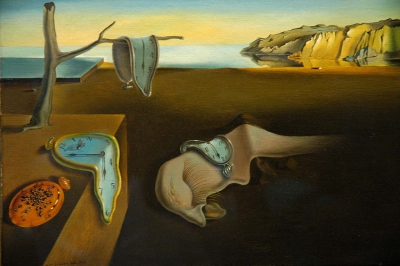
In the early 1900s, following the short burst of a movement called the Dada movement came another that invested in the unconscious and the surreal corners of one’s imagination. This came to be called Surrealism. Inspired by the words of revolutionary Karl Marx and most importantly, father of psychoanalysis Sigmund Freud, the movement aimed to unlock one’s consciousness and reveal its true nature and creativity.
The Dada movement that preceded this was also about moving away from traditional forms of art with a more aggressive approach. This one, in comparison, focussed on dreams and breaking the chains of logic, and influenced art, literature, philosophy, films and music. The forerunners of this movement were Salvador Dali, Andre Breton (writer), Yves Tanguy and Joan Miro.
Surrealism believed in overlooking reality and creating from within. Sometimes, to achieve this, artists conducted different experiments on themselves to reach a state from where they could unconsciously create. One of the experiments was hypnosis but they soon deemed it as too dangerous. In their core, surrealists tried to liberate the imagination and reach new depths of human psyche.
Examples
The Persistence of Memory
Probably the most iconic Surrealist painting in history, this work by Salvador Dali, with dripping clocks, is an ode to time. The painting portrays Dali’s subconscious and also conveys a simple message – that time holds no meaning.
The Son of Man
This painting by Rene Magritte is a self-portrait. This painting aims to convey the message that not everything is as it seems and there’s more than one side to a person.
Harlequin’s Carnival
One of Joan Miro’s most iconic work of art, this painting is about the hallucinations that Miro saw when he went through a rough patch and too poor to often eat three full meals. Of the painting, Miro said, “I tried to translate the hallucinations that hunger would produce. I didn’t depict what I’d see in my drams, as the Surrealist often did, but what hunger would produce: a form of trance.”
Wow facts
- Sigmund Freud preferred the works of Salvador Dali to any other surrealist painters and felt that the unconscious was being manifested into the conscious world through his art. Dali’s paintings border on dreams and illusions, making him one of the Surrealist movement’s most important and popular painters.
- Many women joined the Surrealist movement, even though they were quick to be dismissed by the male surrealists. Meret Oppenheim, Leonora Carrington, Dorothea Tanning and Remedios Varo are a few painters who brought their own personal stories into the movement.
Picture Credit : Google





